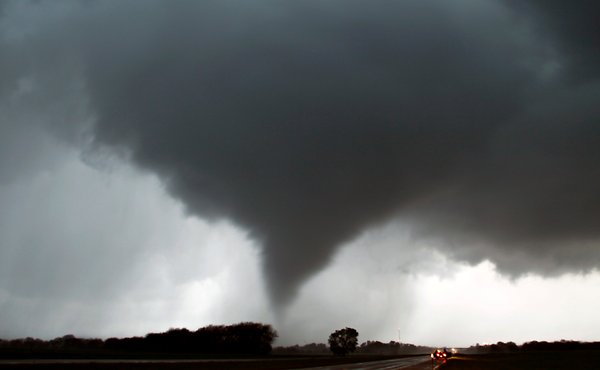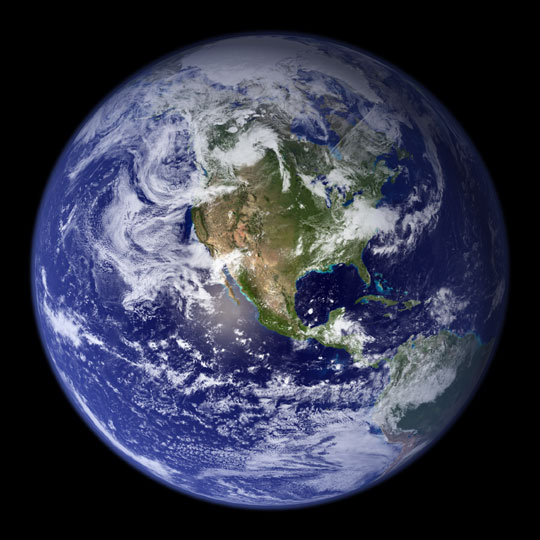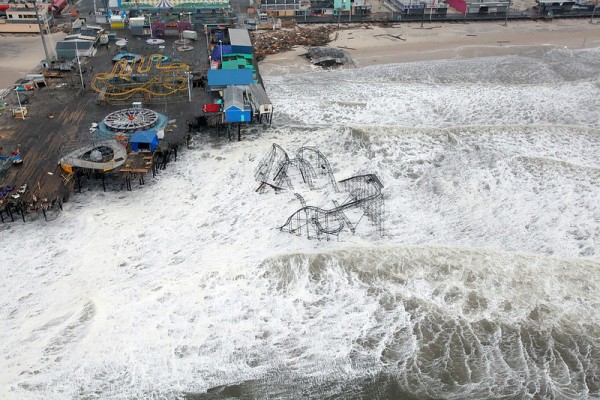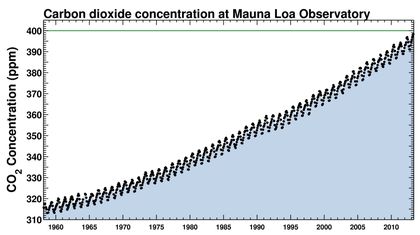
One of over 100 Tornadoes that hit Kansas, Iowa and Oklahoma on 4/14/12
Kansas, Oklahoma, Earth Day, 2012, or Eaarth Day, cognizant of Bill McKibben’s observation that the planet on which we live is qualitatively different from the planet on which we were born.
Do you see your cup as half-full, or half-empty? Is it on a table, or a pile of rubble? And is it filled with clean water or a toxic soup?
Status: Over 100 Tornadoes hit the mid-west, mostly Kansas and Oklahoma on Saturday, April 14, 2011 (NY Times). The summer of 2011 was one of the hottest, with 90 days of over 100 degrees in Austin, Texas ( National Oceanographic and Atmospheric Administration, NOAA: Data, Analysis). The winter of 2011-2012 was also one of the warmest, with records set and broken across the United States. A thorough analysis of climate science is beyond the scope of this post, but is covered in The Rough Guide to Climate Change, The Symptoms, The Science, The Solutions, by Robert Henson, ISBN 978-1-84836-579-7, Climate Change, A Multidisciplinary Approach, by William Burroughs, ISBN978-0-521-69033-1, The Climate Fix, by Roger Pielke, Jr, ISBN 978-0-465-02519-0, and An Inconvenient Truth, by Al Gore, ISBN 1-59486-567-1, Eaarth: Making Life on a Tough New Planet, by Bill McKibben, ISBN 978-080509056-7. These are available at your local bookstore, if you have one. Many Americans now understand that our weather and climate are effected by the amount of carbon we have pumped into our atmosphere in the last 200 years (NY Times). If you don’t want to understand the analysis, tune the tv to your local climate denier station, buy a gun, some ammo, and lots of food and water.
Continue reading →




